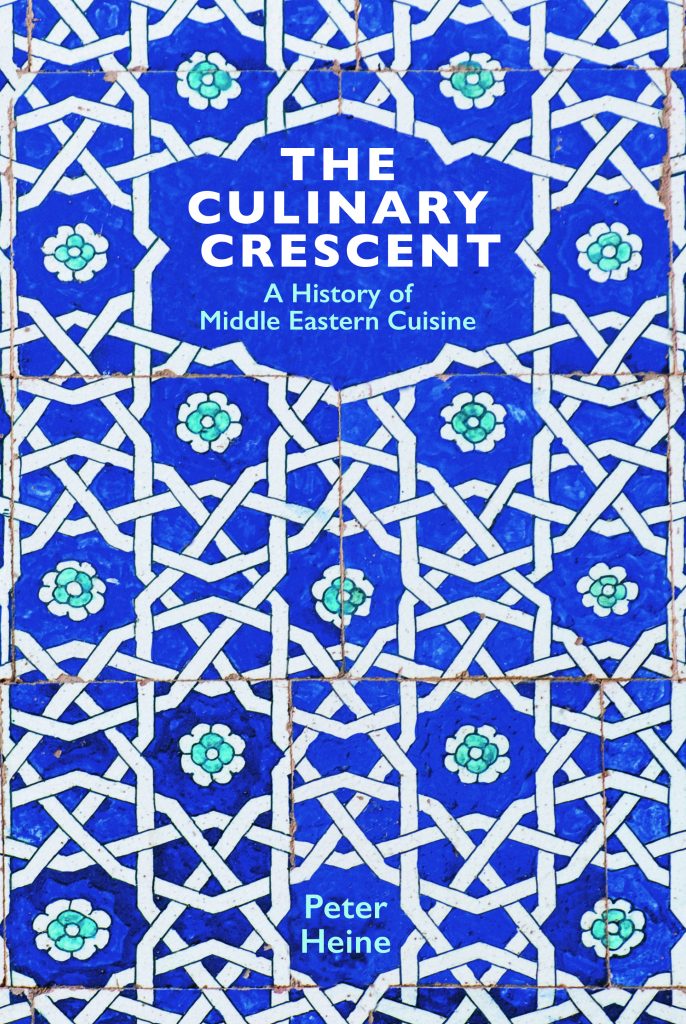
The Culinary Crescent: A History of Middle Eastern Cuisine
Tom Verde
Peter Heine. Peter Lewis, tr.
2018, Gingko Library, 978-1-90994-225-7, $44.95 hb.
This culinary history of the Middle East satisfies the elusive criteria of being all things to all people: broad in scope, yet detailed in discussion, and encyclopedic in its organization, but like a work of narrative nonfiction in its execution. There are sections recounting the importation of ingredients to the region from both the East and West (such as spinach, sugar and tomatoes), and the export of products to Europe (including apricots, coffee and sorbets). Canvasing the distinguishing features of historic cookbooks, Heine provides insights into various cultures. Medieval Arab texts “stress the significance of food and drink as gifts from Allah,” while the Ottomans were most concerned with “how to conduct oneself when invited out to eat.” Recipes for classic dishes like shawarma (grilled marinated lamb) or lokma (fried dough in lemony sugar syrup) add practicality to this scholarly yet readable title.
You may also be interested in...

British Library’s 500-Year-Old Nizami Manuscripts Shed Light on Power of Art and Poetry in 12th-Century Herat
Persian and Mughal scholar and specialist Barbara Brend presents a comprehensive study of one of the most highly esteemed works of Persian Literature.
Essays Unpack the Evolving Hajj and Umrah Experience
This volume of essays juxtaposes historical first-hand narratives of Hajj and Umrah journeys with oral interviews of contemporary pilgrims to show the transformative power of storytelling.